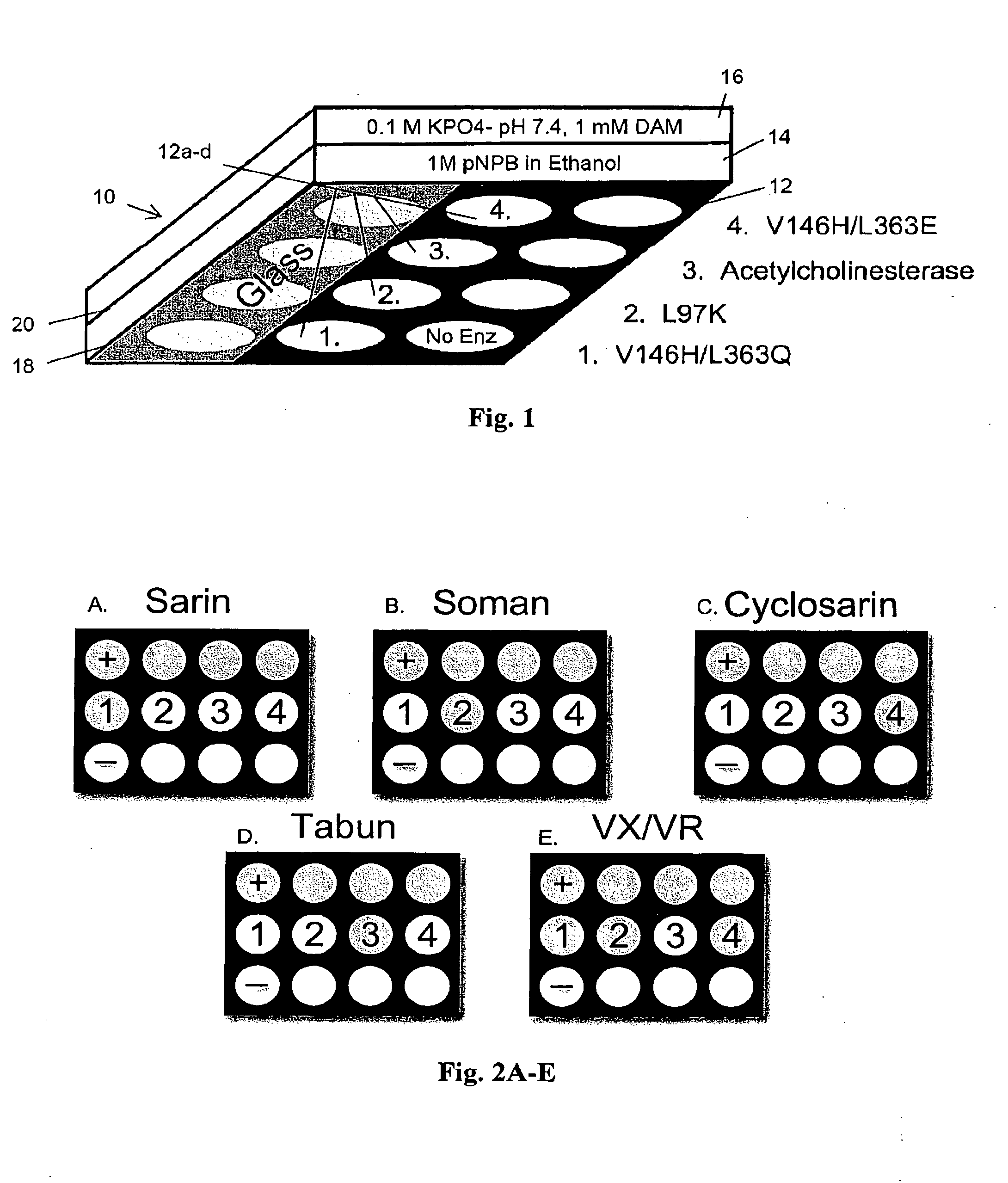Methods and Compositions for Detection and Identification of Organophosphorus Nerve Agents, Pesticides and Other Toxins
a technology of organophosphorus nerve agent and composition, which is applied in the field of methods and compositions for detection and identification of organophosphorus nerve agent and organophosphorus pesticide, can solve the problems of reducing the effectiveness of current nerve agent treatment, limited nerve agent exposure treatment, respiratory paralysis and hepatoxicity
- Summary
- Abstract
- Description
- Claims
- Application Information
AI Technical Summary
Benefits of technology
Problems solved by technology
Method used
Image
Examples
examples
hCE1 Mutant Design
[0136]Site-directed mutagenesis was performed with custom primers designed to produce the desired mutations. The GenBank® Database accession number for hCE1 is M73499. Briefly, 100 μM of both sense and anti-sense custom primers were mixed with 50 ng hCE1 cDNA in a pUC9 vector, 200 μM dNTPs, 1×Pfu-BSA buffer, and 2 u Pfu (NEB). Mutations were introduced and amplified through 15 rounds of PCR at 95° C. for 1 minute, 58° C. for 30 seconds, 70° C. for 10 minutes, followed by 1 hour incubation with DPN1 at 37° C. and transformation into chemically competent DH5α cells. Following overnight growth on ampicillian resistant plates, individual colonies were selected, grown overnight in LB medium suspension and the cDNA was isolated with a GeneJET Plasmid Miniprep kit (Fermentas). Mutations were confirmed through DNA sequencing.
[0137]Once a successful mutation was identified, the 1.7 kB hCE1 gene was cloned out of pUC9 and ligated into pCIneo for mammalian cell expression. Us...
PUM
| Property | Measurement | Unit |
|---|---|---|
| half-time | aaaaa | aaaaa |
| half-time | aaaaa | aaaaa |
| half-time | aaaaa | aaaaa |
Abstract
Description
Claims
Application Information
 Login to View More
Login to View More - R&D
- Intellectual Property
- Life Sciences
- Materials
- Tech Scout
- Unparalleled Data Quality
- Higher Quality Content
- 60% Fewer Hallucinations
Browse by: Latest US Patents, China's latest patents, Technical Efficacy Thesaurus, Application Domain, Technology Topic, Popular Technical Reports.
© 2025 PatSnap. All rights reserved.Legal|Privacy policy|Modern Slavery Act Transparency Statement|Sitemap|About US| Contact US: help@patsnap.com


